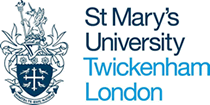Prof J Brewer, Dr C Pedlar
No more applications being accepted
Funded PhD Project (Students Worldwide)
About the Project
Applications are invited for a full-time, three-year PhD studentship at St Mary’s University, Twickenham, London, to begin on 1st February 2016 [completed proposal due September 2015]. Participants in the PhD studentship programme will be expected to contribute to teaching support in the department, up to a maximum of 150 hours per year, commencing in September 2015.
This Sports Physiology studentship will run in collaboration with the National Physical Laboratory, Teddington.
The interaction of microwave and terahertz energy with the human body and biological systems offers many opportunities. In its simplest case the health and safety aspects of interactions above a few tens of gigahertz is not well understood and little work exists in the terahertz range of frequencies. There are also many applications that can take advantage of high-frequency signal interactions with the human body. One example is human hydration status as a diagnostic parameter in a wide range of sports and healthcare applications. In collaboration with NPL, we have progressed the design of a patented device called NPL HydraSense which utilises microwave signals for quantifying tissue water content in real- time. However, the second generation device requires design improvements and a full campaign of clinically approved testing in the sports people and medical environments.
Previous studies demonstrate that dehydration can have a significant negative impact on the performance of athletes resulting in heat illness at warmer climates. In addition, tissue hydration is a key parameter used to evaluate several types of medical conditions. For example, dehydration results in dysphagia in stroke patients causing unnecessary clinical outcomes and costs to the NHS. The most common method for monitoring the hydration status is either by plasma osmolality in blood samples or by bioelectrical impedence analysis. However, these techniques do not provide enough information that could be considered as clinically relevant and are unsuitable for monitoring the acute changes during exercise. Recent commercial devices developed by Artann examine tissue water content by ultrasound. However, the portable device cannot be used during exercise and the data is not examined in real-time.
The current prototype utilises an ear lobe attachment which needs to accommodate a microwave antenna and wireless circuitry while remaining in stable contact during low intensity and moderate exercise. Existing and developed prototypes will be evaluated using biomaterials for frequency-dependent microwave absorption measurements and ethically approved in vivo measurements.

 Continue with Facebook
Continue with Facebook

